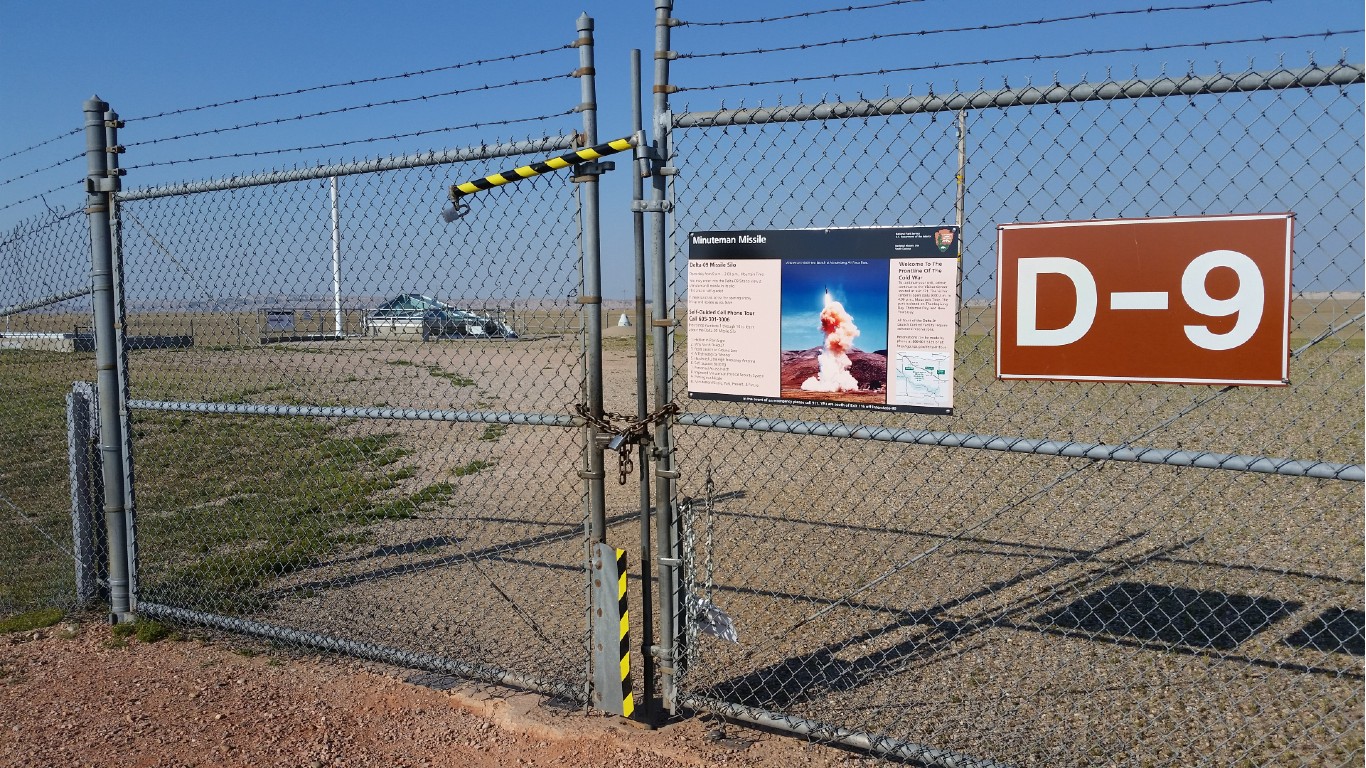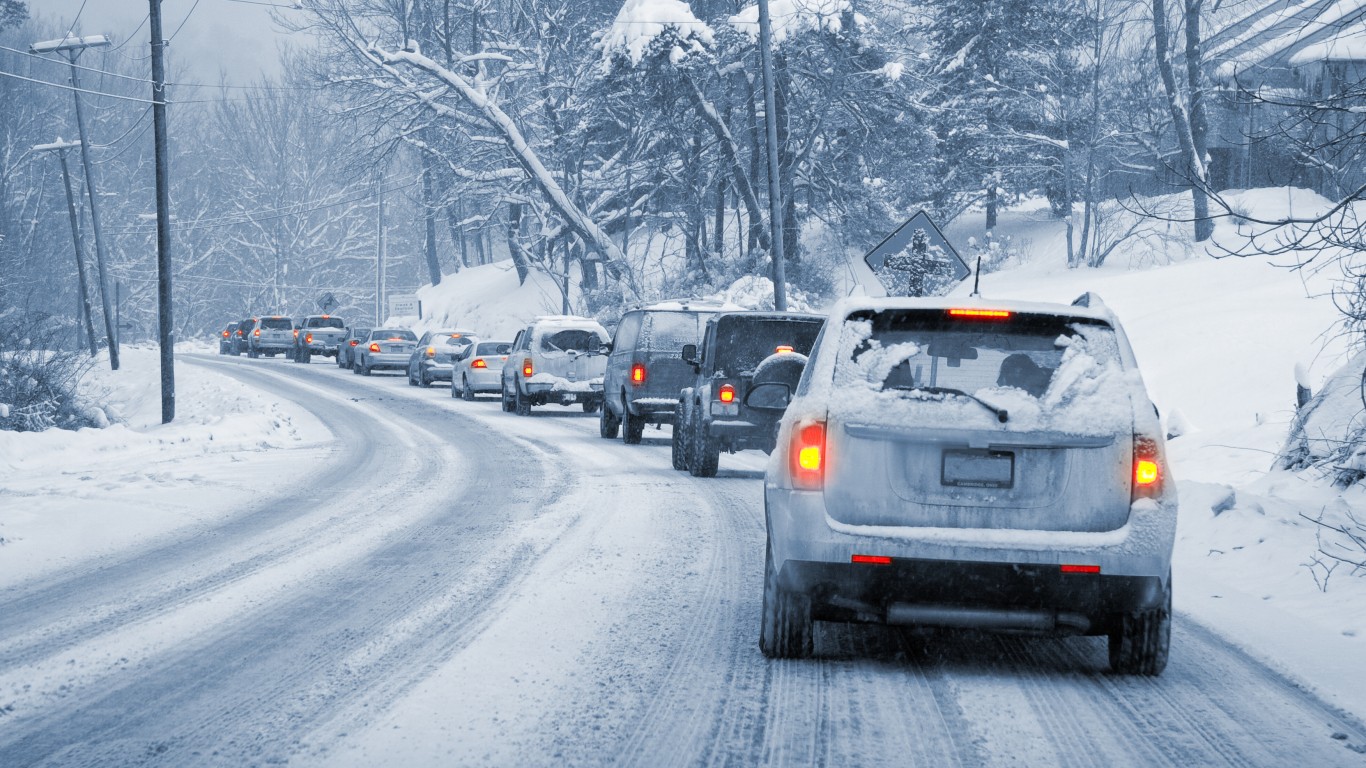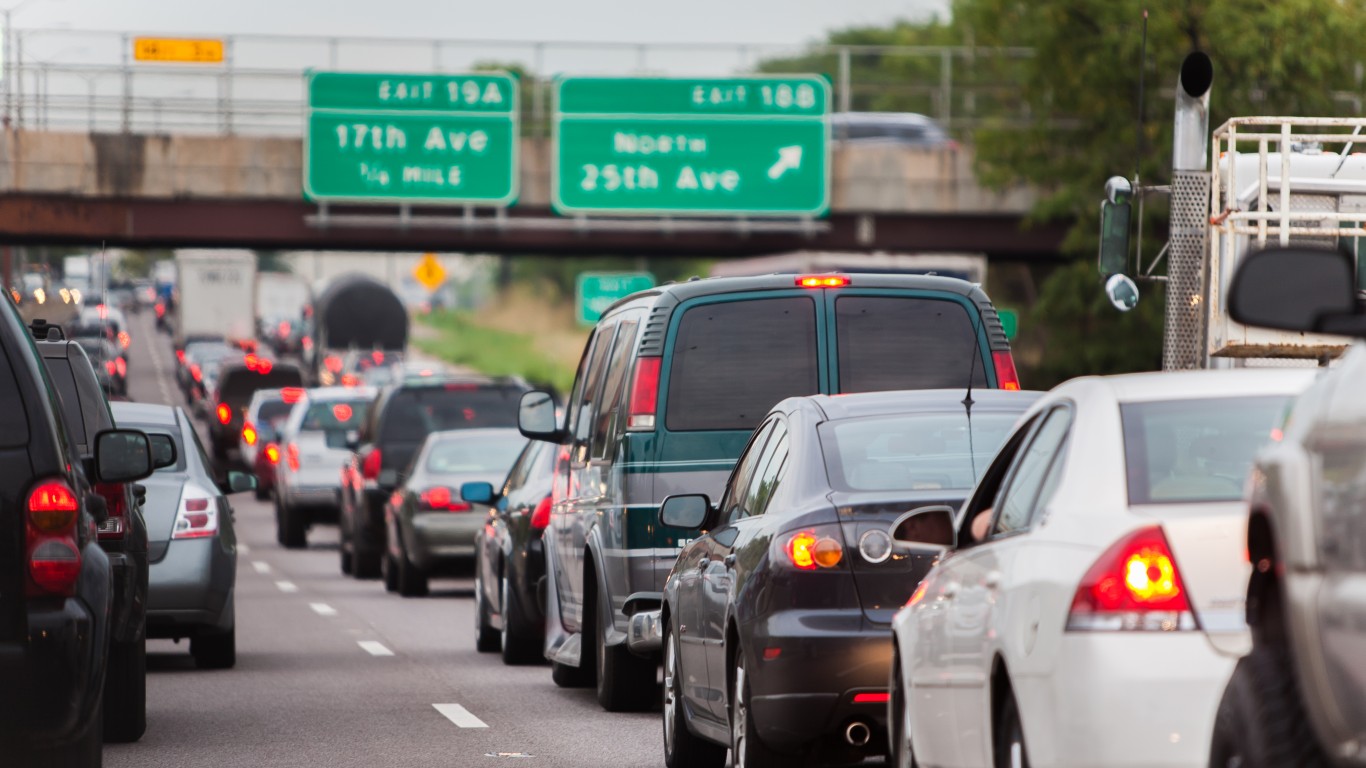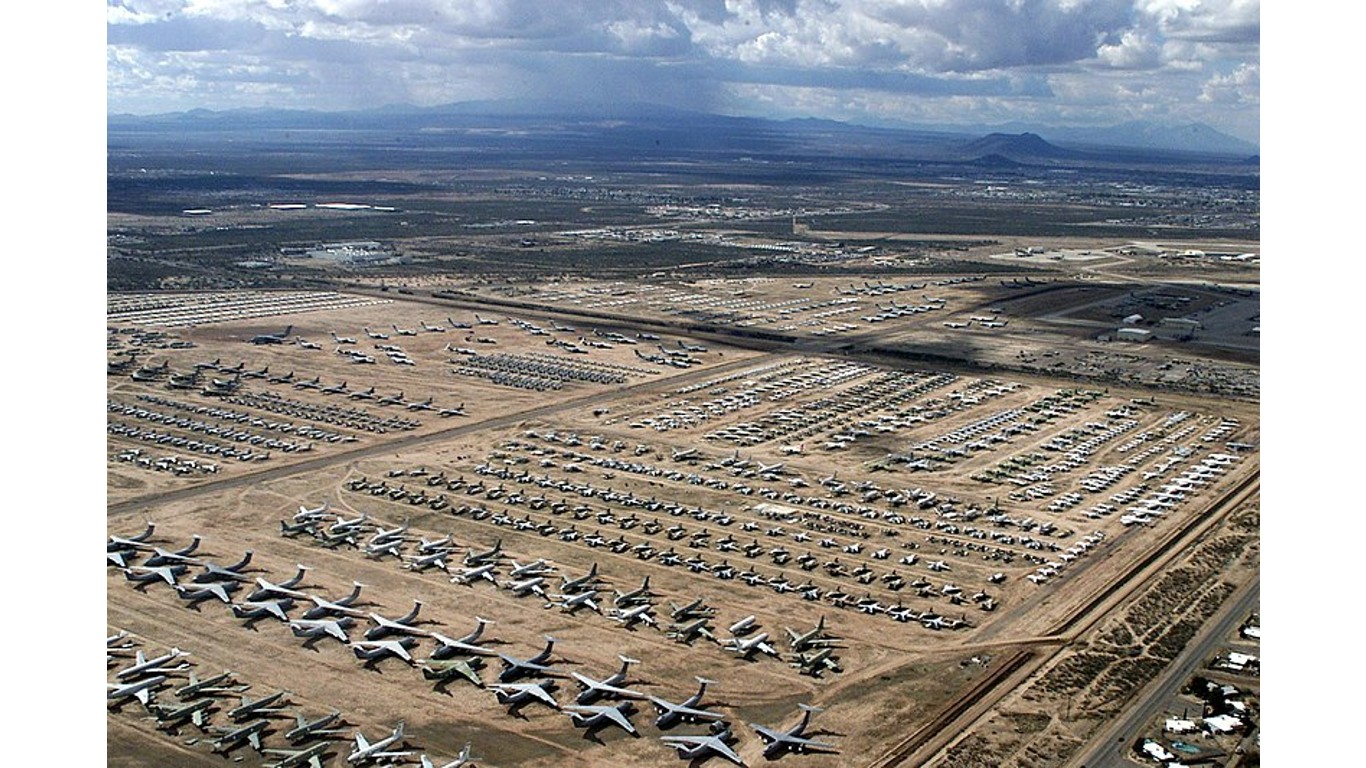
The Cold War began in 1947 and ended with the dissolution of the Soviet Union in 1991. Over those 44 years, the rivalry between the U.S. and Soviets manifested itself in a dangerous arms race and proxy wars fought in South America, Asia, and Africa. More than once during this period, tensions pushed the world to the brink of nuclear armageddon. (Read about these nuclear mistakes that nearly caused the apocalypse.)
Most locations linked to America’s wars – battlefields, cemeteries, ships, forts, or places where surrender took place – are designated by the nation as historically significant and are preserved. The Cold War is an exception. There are comparatively few traditional historical sites around the country associated with that ideological conflict.
There are some, however. To find Cold War sites you can visit in the U.S., 24/7 Tempo reviewed several sources, including the websites of the National Park Service, Smithsonian Magazine, HistoryHit, AtlasObscura, and We’re The Mighty. Our list includes sites of various types – missile silos, launch facilities, bunkers, nuclear reactors and plutonium production facilities, museums, and more, places that are either open to the public or can be viewed by scheduling a tour.
Of the 17 sites cited on our list, eight are located in the West. That is understandable since most of America’s nuclear defense systems are located west of the Mississippi River. There are seven missile bases that can be visited in Alaska, California, Colorado, Florida, North Dakota, and South Dakota. (This is how an ICBM works.)
Four museums with a Cold War theme have been established: Titan Missile Museum in Arizona; The National Atomic Testing Museum in Las Vegas; the South Dakota Air & Space Museum; and the Cold War Museum in Virginia.
Click here to see Cold War sites to visit around America
There are other sites of historical value as well. The Ambassador Romuald Spasowski House in Washington, D.C., was the residence of the former Polish ambassador, who applied for political asylum in the U.S. in December 1981, and became the highest ranking communist official to ever defect to the West. The Greenbrier Bunker, installed in one of America’s premier resorts, in West Virginia, was created to house the federal government in the event of a nuclear attack.
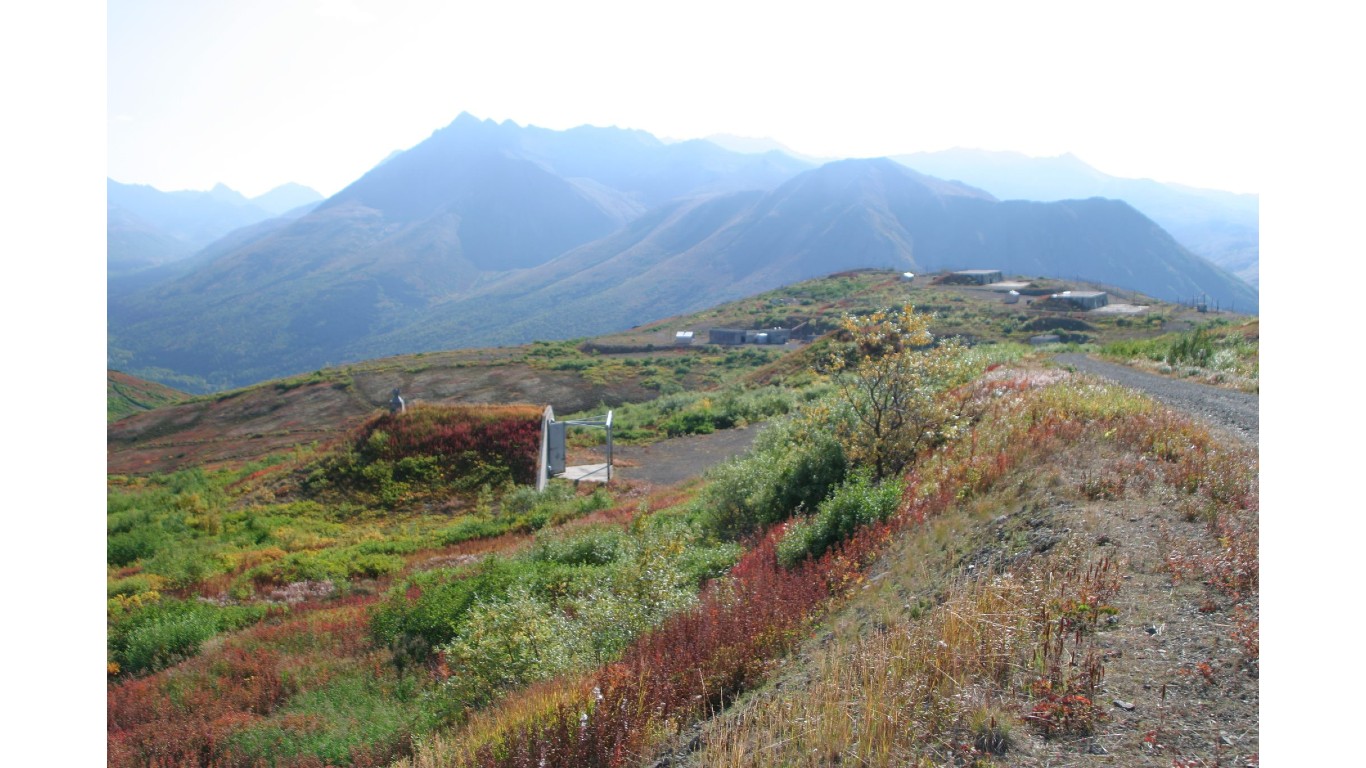
Nike Site Summit
> Where: Outside Anchorage, Alaska
> What it is: Nike-Hercules anti-aircraft missile launch site
[in-text-ad]

Titan Missile Museum
> Where: near Tucson, Arizona
> What it is: Former ICBM site (also known as Air Force Facility Missile Site 8 or Titan II ICBM Site 571-7)

B-52 Storage Area Davis-Monthan AFB
> Where: Outside Tuscon, Arizona
> What it is: “The largest aircraft boneyard in the world”
Nike Missile Site SF-88
> Where: Golden Gate National Recreation Area, north of San Francisco
> What it is: Semi-restored Nike anti-aircraft missile launch site
[in-text-ad-2]
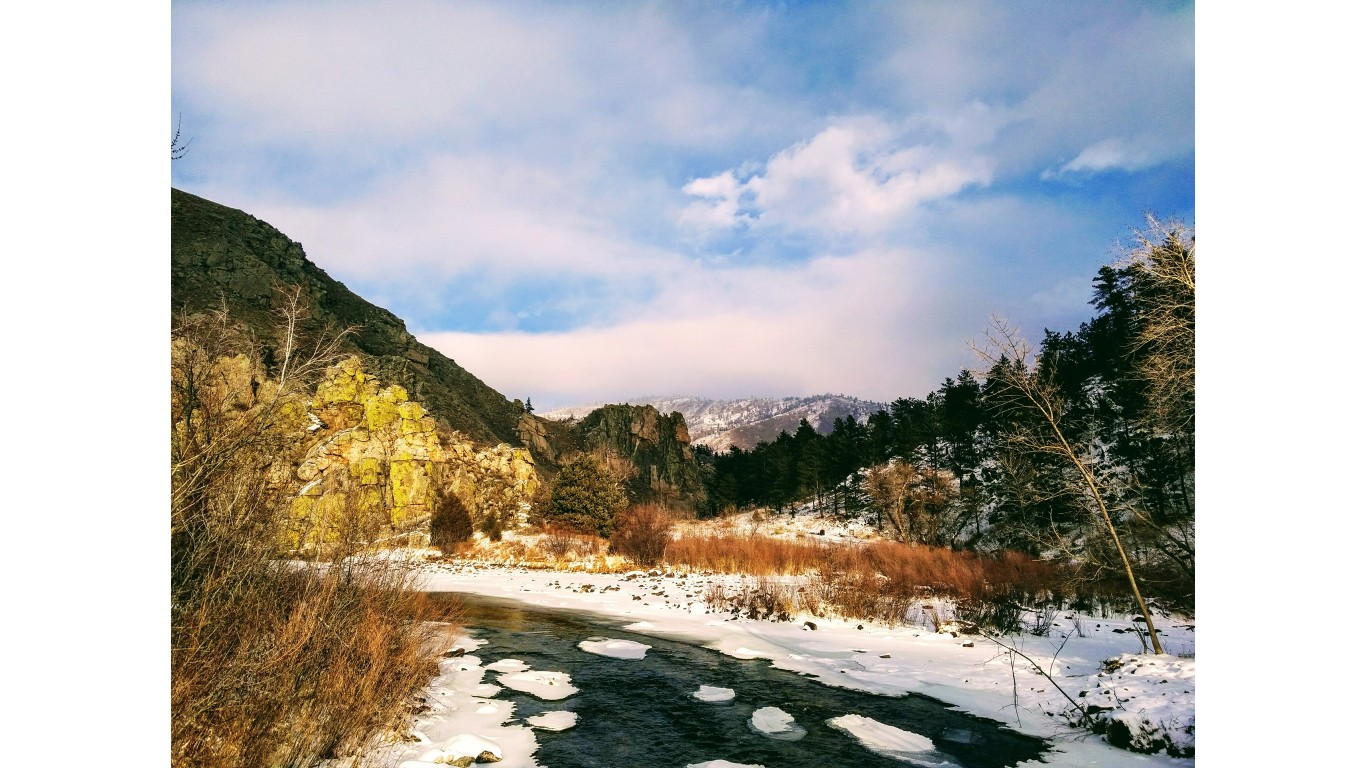
Missile Site Park
> Where: west of Greeley, Colorado
> What it is: Preserved Atlas-E missile launch facility
Ambassador Romuald Spasowski House
> Where: Washington, D.C.
> What it is: Former home of the Polish ambassador, the highest ranking communist official to defect to the West
[in-text-ad]
HM69 Nike Missile Base
> Where: Everglades National Park, Florida
> What it is: One of the best preserved Nike Hercules missile sites, also called “Alpha Battery.”
The National Atomic Testing Museum
> Where: Las Vegas
> What it is: Museum about America’s nuclear weapons testing program at the Nevada Test Site

Remote Sprint Launcher #3 Missile Site
> Where: Cavalier, North Dakota
> What it is: Remote launch bunker, Nike Sprint missile replica, 16 silos field
[in-text-ad-2]
Ronald Reagan Minuteman Missile State Historic Site
> Where: Cooperstown, North Dakota
> What it is: Includes Oscar-Zero, a Minuteman III missile alert facility
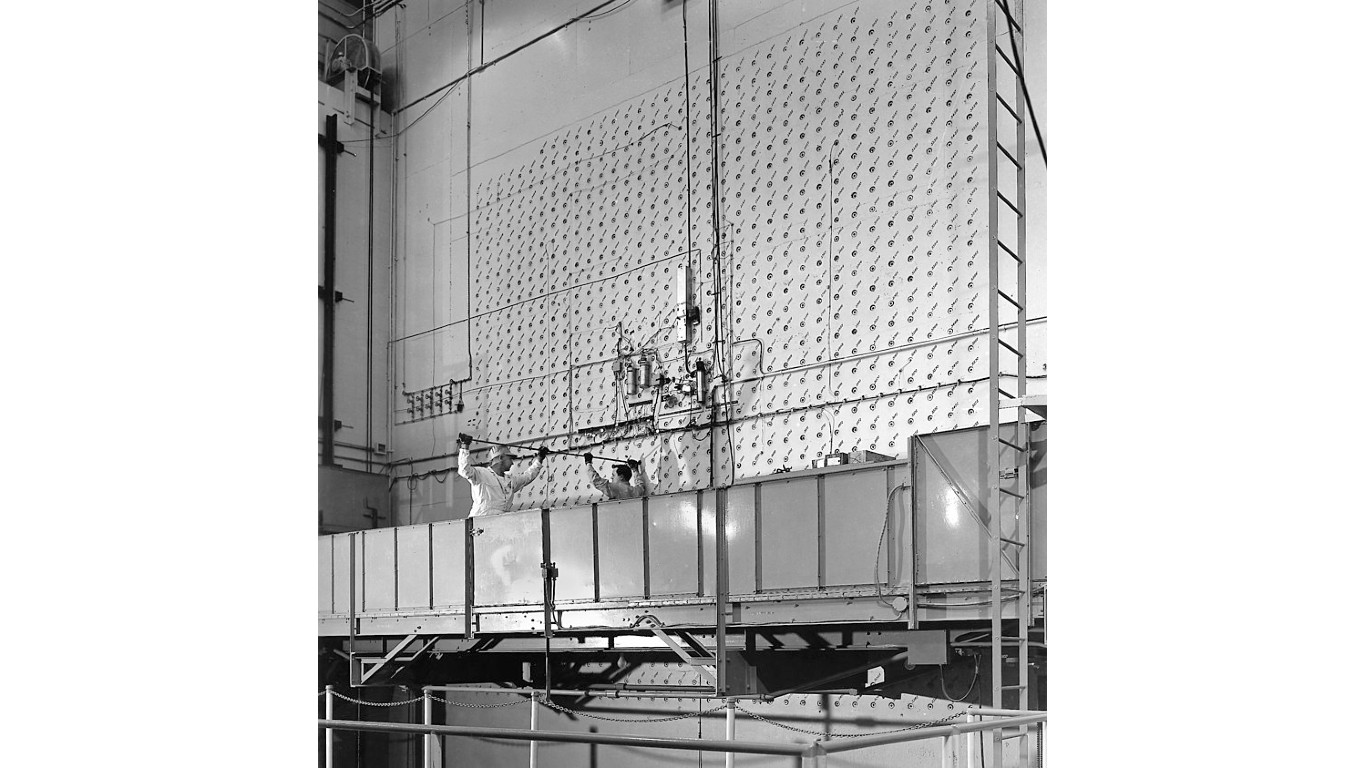
X-10 Graphite Reactor
> Where: Oak Ridge, Tennessee
> What it is: First nuclear production reactor in the world
[in-text-ad]

South Dakota Air & Space Museum
> Where: Box Elder, South Dakota
> What it is: Extensive collection and archive of Cold War aircraft, artifacts, and documents
Delta-09 Missile Silo, Delta-01 Launch Control Facility
> Where: Near Wall, South Dakota
> What it is: Minuteman I & II launch facility

The Cold War Museum
> Where: Warrenton, Virginia
> What it is: Museum on the grounds of the former Vint Hill Farms Station, a top secret Army signals intelligence base
[in-text-ad-2]
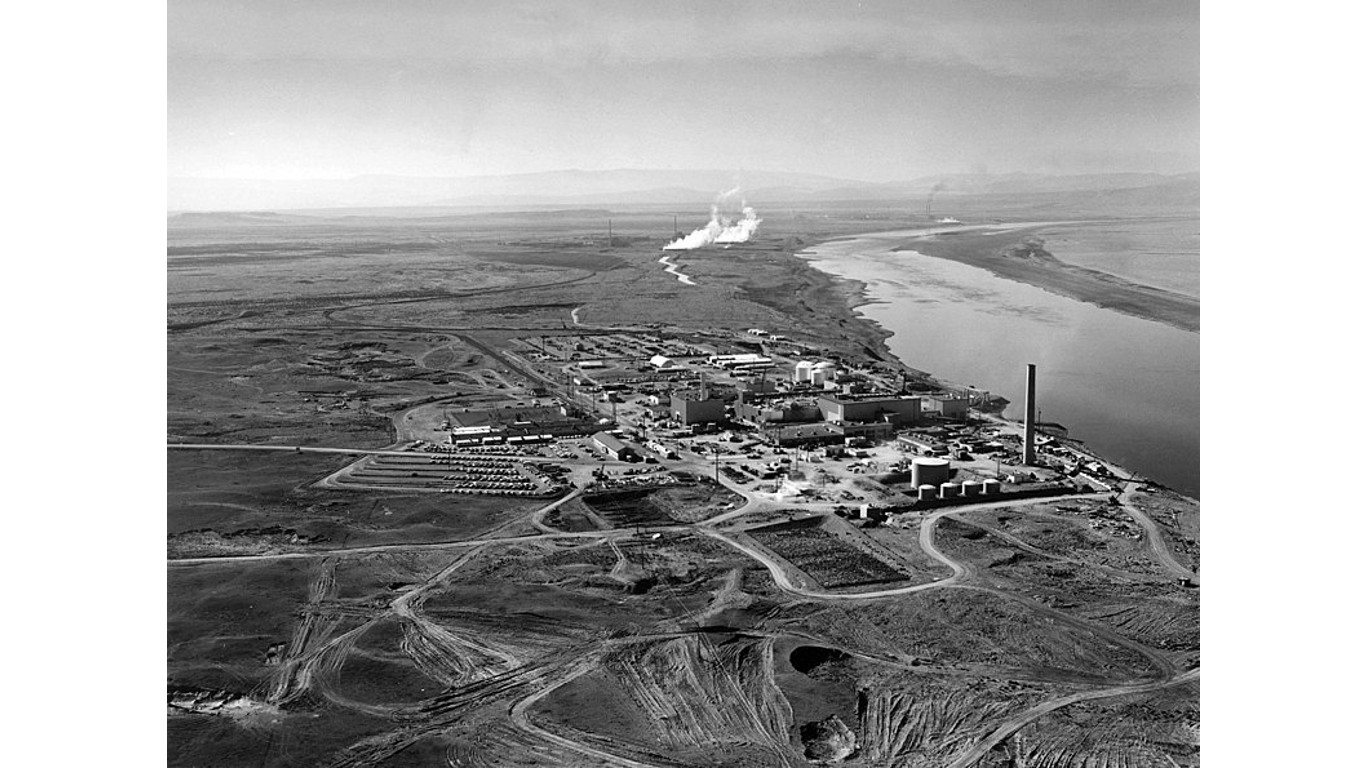
Hanford Site
> Where: Richland, Washington
> What it is: Decommissioned nuclear production complex
Project Greek Island Bunker
> Where: Greenbrier Hotel, White Sulphur Springs, West Virginia
> What it is: Declassified top secret relocation facility for Congress
[in-text-ad]
Quebec-One Missile Alert Facility State Historic Park
> Where: North of Cheyenne, Wyoming
> What it is: Minuteman missile launch control facility
In 20 Years, I Haven’t Seen A Cash Back Card This Good
After two decades of reviewing financial products I haven’t seen anything like this. Credit card companies are at war, handing out free rewards and benefits to win the best customers.
A good cash back card can be worth thousands of dollars a year in free money, not to mention other perks like travel, insurance, and access to fancy lounges.
Our top pick today pays up to 5% cash back, a $200 bonus on top, and $0 annual fee. Click here to apply before they stop offering rewards this generous.
Flywheel Publishing has partnered with CardRatings for our coverage of credit card products. Flywheel Publishing and CardRatings may receive a commission from card issuers.
Thank you for reading! Have some feedback for us?
Contact the 24/7 Wall St. editorial team.
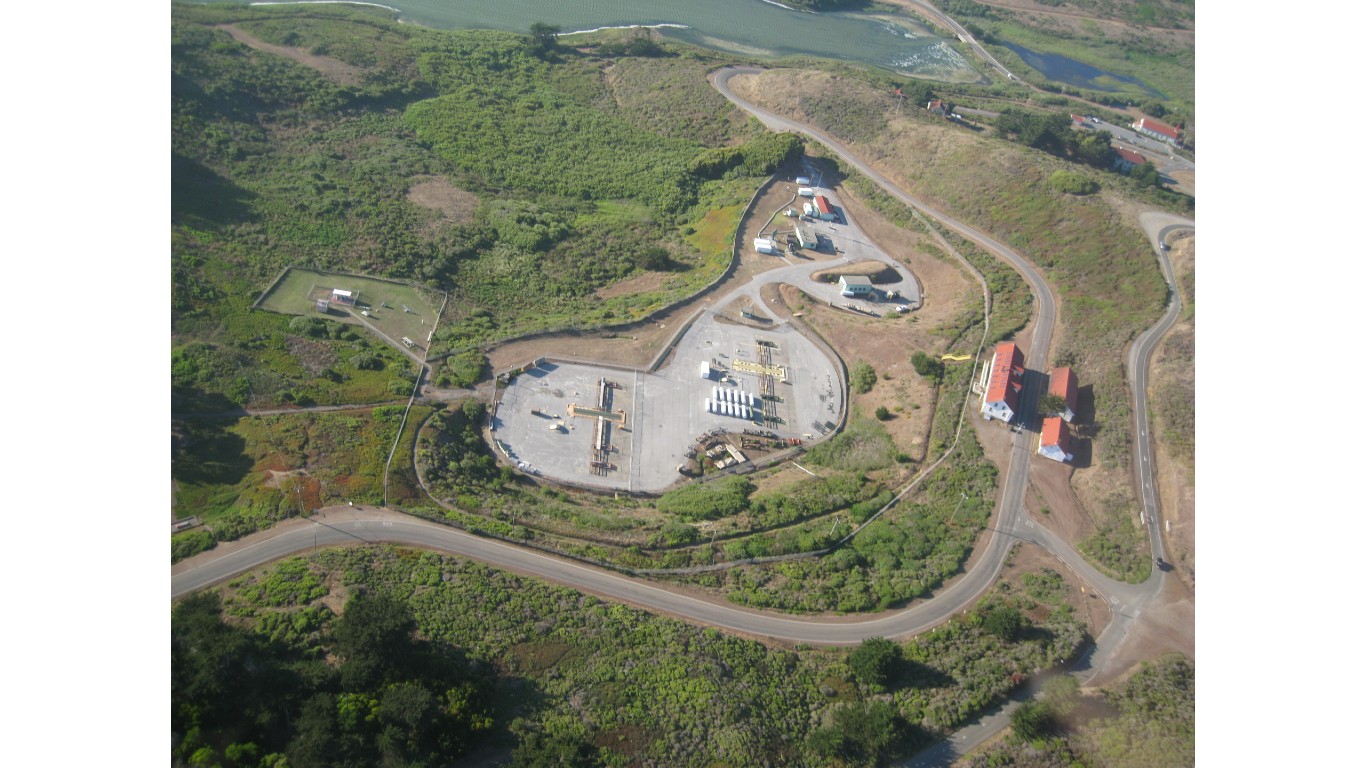
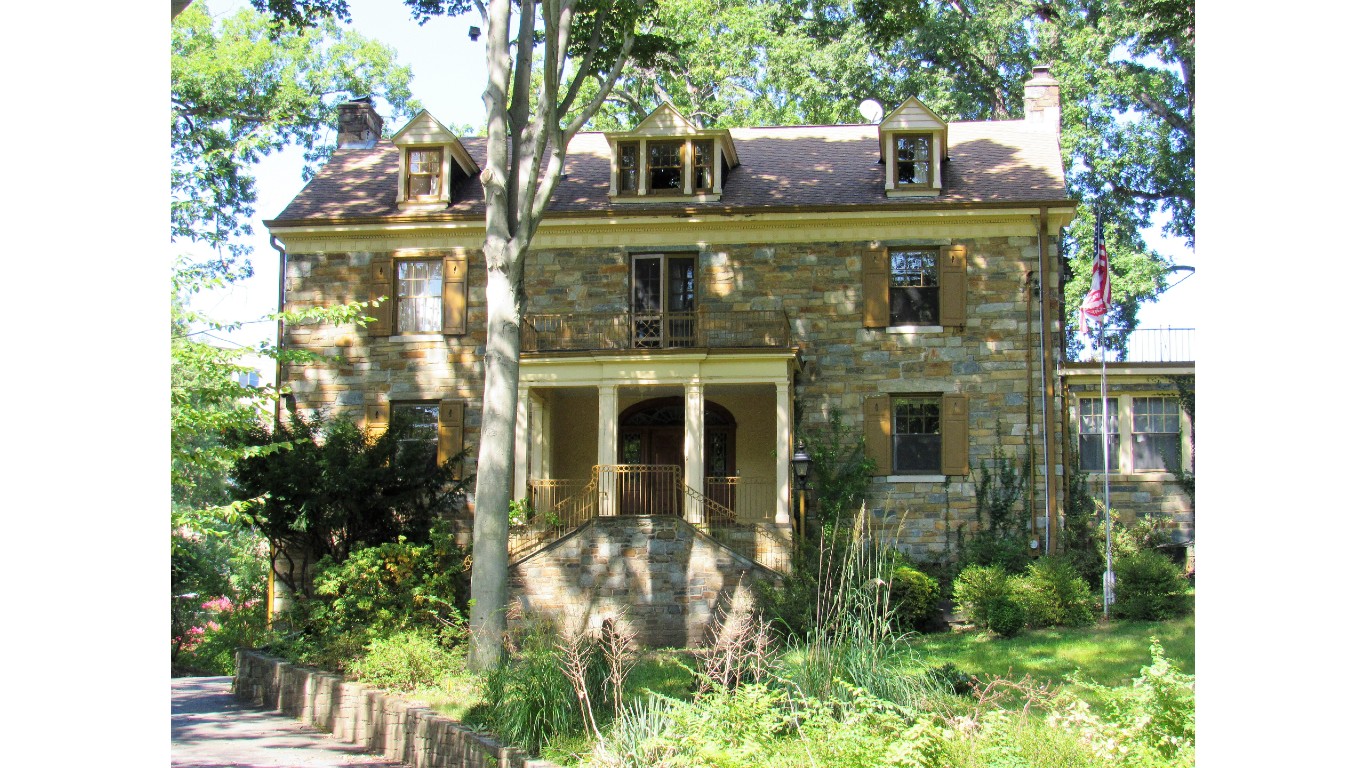



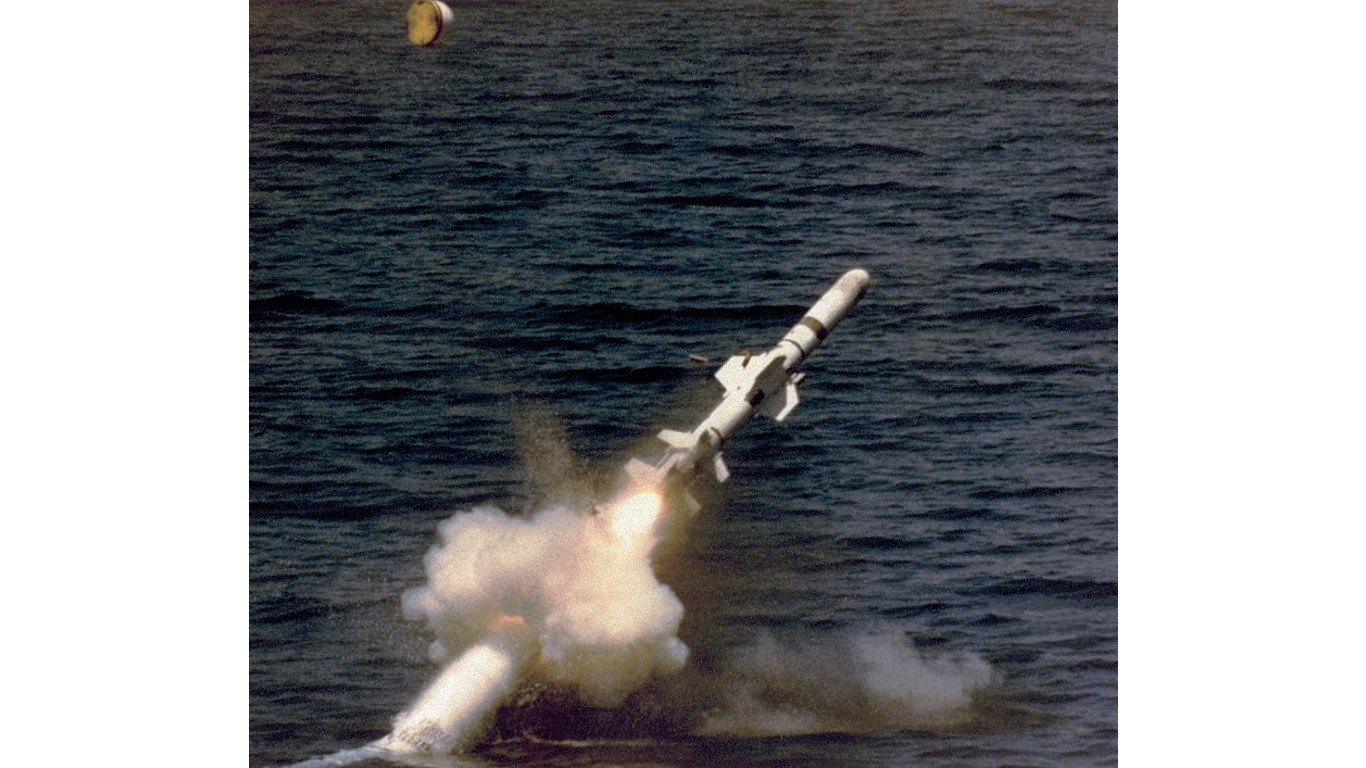 24/7 Wall St.
24/7 Wall St.